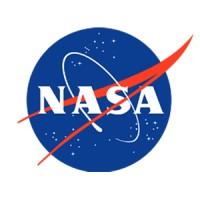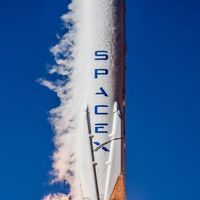A New Era in Space Collaboration: Crew Dragon and Starliner Missions
July 28, 2024, 3:33 pm

Location: United States, Illinois, Chicago
Employees: 10001+
Founded date: 1916
Total raised: $25.01B

Location: United States, Maryland, Greenbelt
Employees: 10001+
Founded date: 1958
Total raised: $25.7B

Location: United States, District of Columbia, Washington
Employees: 5001-10000
Founded date: 2002
Total raised: $7.53B
The cosmos is a vast playground. Humanity's quest to explore it has taken a significant leap forward. On August 18, 2024, the Crew Dragon spacecraft will launch with Russian cosmonaut Alexander Gorbunov aboard. This mission marks a pivotal moment in international space collaboration. It symbolizes a bridge between nations, a handshake in the void of space.
The Crew Dragon will carry Gorbunov alongside NASA astronauts Zen Cardman, Nick Hague, and Stephanie Wilson. This diverse crew embodies the spirit of cooperation. It’s a dance of technology and human spirit, choreographed by agreements made in the past. The cross-flight agreement between Roscosmos and NASA, established in July 2022, allows for such partnerships. It ensures that both American and Russian astronauts can share the same spacecraft, fostering unity in the face of challenges.
But the cosmos is not without its hurdles. NASA recently announced that the Starliner spacecraft, which docked at the International Space Station (ISS) on June 6, will remain there until at least August. The crew, including astronauts Butch Wilmore and Sunita Williams, has been orbiting for over 50 days. Their mission was initially slated for just over a week. Yet, the stars had other plans.
During docking, engineers discovered overheating issues in the Starliner’s service module engines. This revelation has led to a pause in their return. NASA and Boeing are now deep in analysis, trying to unravel the complexities of the spacecraft's systems. Ground tests have been conducted to replicate the overheating conditions. Data is being scrutinized, like a detective piecing together clues.
NASA’s commercial flight program manager, Steve Stich, has stated that a return date for the Starliner crew remains uncertain. The teams are not ready to make that call. A thorough review is scheduled for the first week of August. Until then, the astronauts continue their work aboard the ISS, contributing to the ongoing mission of the station. They are not stranded; they are part of a larger purpose.
In the world of space travel, plans can shift like the tides. NASA has confirmed it will not use Crew Dragon to bring the Starliner crew back home. Instead, contingency plans are in place. If necessary, the astronauts may return on a future Crew Dragon flight, potentially requiring modifications to accommodate more crew members. The upcoming Crew-9 mission in August will see the Crew Dragon launch with Gorbunov and the NASA astronauts.
This scenario highlights the unpredictable nature of space missions. It’s a reminder that while technology advances, the human element remains paramount. Astronauts are not just passengers; they are pioneers. They adapt, innovate, and collaborate. Their experiences shape the future of space exploration.
The partnership between NASA and Roscosmos is more than a contractual agreement. It’s a testament to what can be achieved when nations work together. The ISS serves as a beacon of hope, a symbol of peace in a world often divided. It’s a reminder that beyond our differences, we share a common goal: the exploration of the unknown.
As the Crew Dragon prepares for its launch, the world watches. The mission is not just about reaching the ISS; it’s about forging connections. It’s about the stories that will unfold in the silence of space. Each astronaut carries with them the hopes and dreams of their nations. They are ambassadors of humanity, venturing into the great beyond.
The challenges faced by the Starliner crew also serve as a learning opportunity. Each setback is a lesson, each delay a chance to improve. The complexities of space travel are akin to navigating a labyrinth. It requires patience, precision, and perseverance. NASA and Boeing are committed to ensuring the safety of their astronauts. They will not rush the process.
In the grand tapestry of space exploration, these missions are threads woven together. They create a narrative of discovery, resilience, and collaboration. The cosmos is a canvas, and humanity is painting its story across the stars.
As we look to the future, the potential for further collaboration is immense. The Artemis program aims to return humans to the Moon, with plans for Mars on the horizon. International partnerships will be crucial in these endeavors. The lessons learned from the Crew Dragon and Starliner missions will inform future projects.
In conclusion, the upcoming Crew Dragon mission with Gorbunov and the ongoing Starliner saga exemplify the spirit of exploration. They remind us that while the journey may be fraught with challenges, the rewards are boundless. Together, we can reach for the stars, united in our quest for knowledge and understanding. The universe awaits, and humanity is ready to embrace its mysteries.
The Crew Dragon will carry Gorbunov alongside NASA astronauts Zen Cardman, Nick Hague, and Stephanie Wilson. This diverse crew embodies the spirit of cooperation. It’s a dance of technology and human spirit, choreographed by agreements made in the past. The cross-flight agreement between Roscosmos and NASA, established in July 2022, allows for such partnerships. It ensures that both American and Russian astronauts can share the same spacecraft, fostering unity in the face of challenges.
But the cosmos is not without its hurdles. NASA recently announced that the Starliner spacecraft, which docked at the International Space Station (ISS) on June 6, will remain there until at least August. The crew, including astronauts Butch Wilmore and Sunita Williams, has been orbiting for over 50 days. Their mission was initially slated for just over a week. Yet, the stars had other plans.
During docking, engineers discovered overheating issues in the Starliner’s service module engines. This revelation has led to a pause in their return. NASA and Boeing are now deep in analysis, trying to unravel the complexities of the spacecraft's systems. Ground tests have been conducted to replicate the overheating conditions. Data is being scrutinized, like a detective piecing together clues.
NASA’s commercial flight program manager, Steve Stich, has stated that a return date for the Starliner crew remains uncertain. The teams are not ready to make that call. A thorough review is scheduled for the first week of August. Until then, the astronauts continue their work aboard the ISS, contributing to the ongoing mission of the station. They are not stranded; they are part of a larger purpose.
In the world of space travel, plans can shift like the tides. NASA has confirmed it will not use Crew Dragon to bring the Starliner crew back home. Instead, contingency plans are in place. If necessary, the astronauts may return on a future Crew Dragon flight, potentially requiring modifications to accommodate more crew members. The upcoming Crew-9 mission in August will see the Crew Dragon launch with Gorbunov and the NASA astronauts.
This scenario highlights the unpredictable nature of space missions. It’s a reminder that while technology advances, the human element remains paramount. Astronauts are not just passengers; they are pioneers. They adapt, innovate, and collaborate. Their experiences shape the future of space exploration.
The partnership between NASA and Roscosmos is more than a contractual agreement. It’s a testament to what can be achieved when nations work together. The ISS serves as a beacon of hope, a symbol of peace in a world often divided. It’s a reminder that beyond our differences, we share a common goal: the exploration of the unknown.
As the Crew Dragon prepares for its launch, the world watches. The mission is not just about reaching the ISS; it’s about forging connections. It’s about the stories that will unfold in the silence of space. Each astronaut carries with them the hopes and dreams of their nations. They are ambassadors of humanity, venturing into the great beyond.
The challenges faced by the Starliner crew also serve as a learning opportunity. Each setback is a lesson, each delay a chance to improve. The complexities of space travel are akin to navigating a labyrinth. It requires patience, precision, and perseverance. NASA and Boeing are committed to ensuring the safety of their astronauts. They will not rush the process.
In the grand tapestry of space exploration, these missions are threads woven together. They create a narrative of discovery, resilience, and collaboration. The cosmos is a canvas, and humanity is painting its story across the stars.
As we look to the future, the potential for further collaboration is immense. The Artemis program aims to return humans to the Moon, with plans for Mars on the horizon. International partnerships will be crucial in these endeavors. The lessons learned from the Crew Dragon and Starliner missions will inform future projects.
In conclusion, the upcoming Crew Dragon mission with Gorbunov and the ongoing Starliner saga exemplify the spirit of exploration. They remind us that while the journey may be fraught with challenges, the rewards are boundless. Together, we can reach for the stars, united in our quest for knowledge and understanding. The universe awaits, and humanity is ready to embrace its mysteries.